The deltoid completely surrounds the shoulder joint complex, reflecting like armor with three muscle heads, seven individual segments, and other intramuscular segments (1,2).
The development of large deltoids, nowadays called “3D Shoulders,” is attractive and tempting. Therefore, the objective of this article is based on presenting a series of practical recommendations for the development of the 3D shoulder and lateral deltoid.
Anatomy of the lateral deltoid
The lateral or medial deltoid (1,2,3) is one of the 3 muscles that form the deltoid musculature (although there may be other intramuscular segments).
This muscle group overlaps the shoulder superficially, having three origins: the body of the clavicle, the spine of the scapula, and the acromion. Regarding functionality, it depends on which muscle fibers are activated (in the case of the lateral portion of the deltoid: it abducts the humerus).
In relation to the trainability of the lateral deltoid (1,2,3), it is important to mention that it has a relatively large cross-sectional area compared to other upper body muscles and is composed of a mixed type of muscle fiber. This implies that heavy-moderate and low training loads are beneficial.

Moment arm of the lateral deltoid
The moment arm of a muscle force “represents the mechanical advantage of a muscle and largely determines its function, for example, as a stabilizer or primary mover” (4).
The selection of deltoid exercises is closely related to the muscle moment arm. That is, this tool gives us information about the most effective deltoid exercises, efficient ones, and how to program them over time.
In relation to this, Ackland et al. (4) determined the instantaneous moment arms of various muscle sub-regions of the glenohumeral joint. Specifically and based on the objective of this study (4):
- The middle deltoid and anterior were the most effective abductors.
- The peak moment arm of the lateral deltoid occurs around 86-90º (shoulder abduction from the frontal plane). Even, there may be higher activations between 90-105º (5), simultaneously increasing the EMG of other undesired muscles.
Practical applications
Below, a series of practical tips will be presented that should be integrated into the methodology and planning of the training of the lateral portion of the deltoid.
The purpose of these evidence-based recommendations is the maximization and optimization of muscle mass and strength gains.
- Mixed fiber type: alternate heavy and light loads (2).
- Deltoid exercises (table 1): 45º Incline Row, Bent Arm Lateral Raise, Cable Diagonal Raise, Barbell Upright Row, Seated Rear Lateral Raise, Dumbbell Shoulder Press, and Lateral Raise with Superband (6).
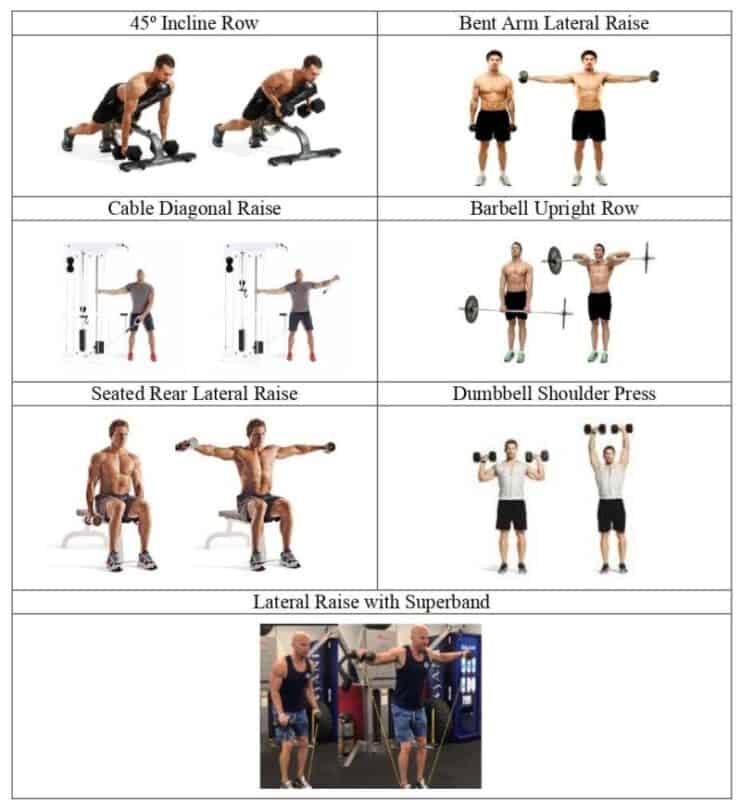
- Optimal load magnitude (7,8)
- Training volume.
- Maintenance (MV): 6 sets/week.
- Minimum Effective (MEV): 8 sets/week.
- Maximum Acceptable or Optimal (MAV): 16-22 sets/week.
- Maximum Recoverable (MRV): 26 or more sets/week.
- Training intensity: 10-20 (or more) repetitions per set, with an RIR (Repetitions in Reserve) 0-2.
- Training frequency: 2-6 times/week.
- Range of motion: due to anatomical complexity, deltoid exercises should be executed with the maximum possible elongation, as long as there is no pain or discomfort.
- Training volume.
- Use of special techniques: supersets, drop sets, myo-reps, and rest-pause (7,8).
- Training periodization: alternate periods of high and low work frequency, use of specialization mesocycles for the lateral deltoid, systematic progression of training volume, and progressive overload.
- Vary the muscle state of the lateral deltoid.
- Maximum shortening: inclined lateral raises.
- Mid-range: lateral raises on an inclined bench.
- Stretching: lateral raises in a side-lying position.
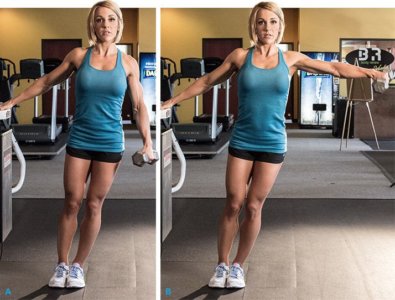
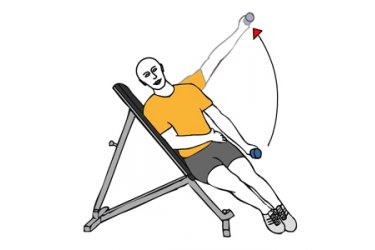
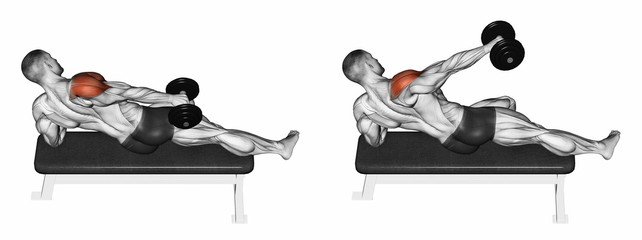
- Pre-activation of the musculature before effective work.
- Mind-muscle connection (9,10,11).
- Sistematic Touch Training (12).
- Safety: scapular plane.
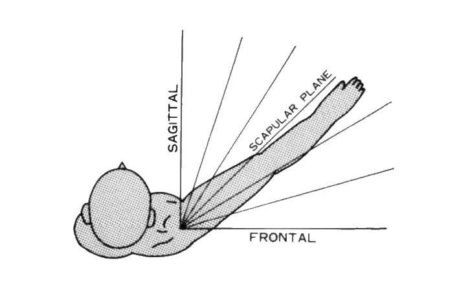
Conclusions
To begin with, the deltoid is a complex muscle group that envelops the glenohumeral joint.
It has a series of characteristics that determine its training capacity: 3 portions (and three origins), 7 individual segments, different functions depending on the activated fibers, relatively large cross-sectional area, and mixed-type fibers.
On the other hand, the moment arm emerges as a very useful tool to determine the mechanical advantages of the muscles.
Specifically, the lateral deltoid (and the anterior) is one of the most effective abductors, reaching the peak moment arm around 86-90º (even higher EMG may exist between 90-105º).
Finally, and with reference to the cited evidence, the optimization of the methodology, planning, programming, periodization, and prescription of the lateral deltoid training will be determined by:
The alternation of heavy and light loads, the selection of the most effective and efficient exercises, the determination of the optimal training volume, intensity, and frequency, the use of the greatest possible range of motion, the use of advanced training techniques (supersets, drop sets, myo-reps, and rest-pause), training periodization, variation of the muscle state (shortening, mid-range, and stretching) through different exercises, pre-activation of the target musculature, seeking the mind-muscle connection, and working in the scapular plane.
“The lateral deltoid (and the anterior) is one of the most effective abductors, reaching the peak moment arm around 86-90º (even higher EMG may exist between 90-105º).”
Bibliography
- Bentley, A. & Beardsley, C. (n.d.). Deltoids. Strength and Conditioning Research. Retrieved from https://www.strengthandconditioningresearch.com/muscles/deltoids/
- Bentley, A. (2016). What You Don’t Know About Training Delts: 10 Research-Driven Tips for Building Shoulders. T-Nation. Retrieved from https://www.t-nation.com/training/what-you-dont-know-about-training-delts
- Eovaldi, B. J. & Varacallo, M. (2018). Anatomy, Shoulder and Upper Limb, Shoulder Muscles. In StatPearls [Internet]. StatPearls Publishing.
- Ackland, D. C., Pak, P., Richardson, M., & Pandy, M. G. (2008). Moment arms of the muscles crossing the anatomical shoulder. Journal of Anatomy, 213(4), 383-390.
- Wickham J, Brown JM (1998) Muscles within muscles: the neuromotor control of intra-muscular segments. European Journal Apply Physiology, 78, 219–225
- Sweeney, S. P. (2014). Electromyographic analysis of the deltoid muscle during various shoulder exercises (Doctoral dissertation).
- Israetel, M. (2017). General Training: Mesocycle Design for Hypertrophy. Retrieved from https://github.com
- Revive Stronger (2017). Revive Stronger. Retrieved from: https://revivestronger.com/training-volume/
- Calatayud, J., Vinstrup, J., Jakobsen, M. D., Sundstrup, E., Brandt, M., Jay, K., … & Andersen, L. L. (2016). Importance of mind-muscle connection during progressive resistance training. European Journal of Applied Physiology, 116(3), 527-533.
- Wulf, G. (2013). Attentional focus and motor learning: A review of 15 years. International Review of Sport and Exercise Psychology, 6(1), 77-104.
- Schoenfeld, B. J. & Contreras, B. (2016). Attentional Focus for Maximizing Muscle Development: The Mind-Muscle Connection. Strength & Conditioning Journal, 38(1), 27-29
- Rothenberg, B. & Rothenberg, O. (1995). Touch Training for Strength. Human Kinetics Publishers.

